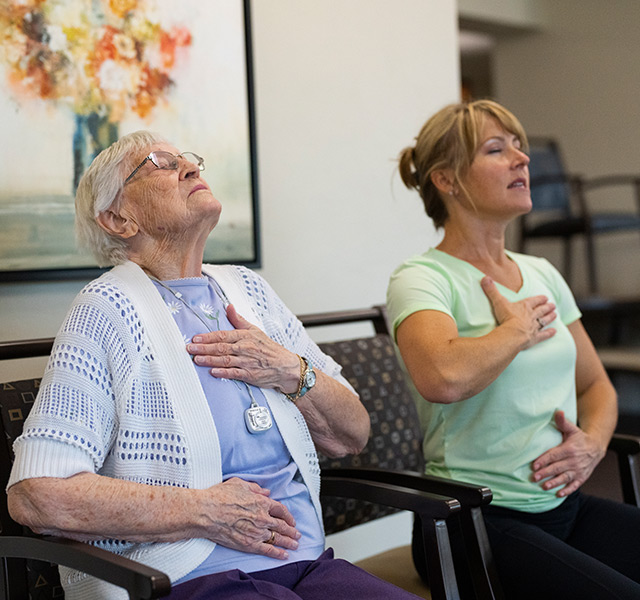Unleash the Healing Power of Breath

Scientific Studies Show Remarkable Benefits, From Alzheimer's Risk Reduction to Blood Pressure Control
In the quest for improved health and vitality, we often overlook one of the most fundamental and accessible tools at our disposal — our breath. Recent studies have unveiled the extraordinary benefits of intentional breathing exercises, from cognitive health to blood pressure regulation.
Reducing Cognitive Decline: A Breath of Fresh Air
A recent study from the University of Southern California (USC) highlights a compelling connection between breathing exercises and Alzheimer's disease risk reduction.
The research suggests that simple, intentional breathing techniques can influence the levels of Alzheimer's-associated amyloid beta peptides, a hallmark of the disease.
In the study, participants practiced slow-paced breathing. They were instructed to follow an image on a screen that moved up and down.
The results demonstrated a notable decrease in amyloid beta levels. This discovery underscores the potential of breath work in promoting cognitive health and holds promise for those seeking to reduce their Alzheimer's risk.
Give it a try!
- Set your timer for 20 minutes.
- Inhale for a count of five, exhale for a count of five.
- Repeat for twenty minutes.
- Do this twice a day.

Harnessing the Power of Diaphragmatic Breathing
Your diaphragm is the all-star of all your breathing muscles. Strengthening this muscle will help you in the long run, no matter where you’re starting from. Diaphragmatic breathing helps reduce stress, improve muscle function, increase the amount of oxygen in your blood, and helps reduce blood pressure. The best part, all you have to do to work this muscle is breathe.
Give it a try!
If you’re just getting started it may be easiest to lay down on your bed with your head on a pillow and a pillow under your knees. As you feel more comfortable you can move to sitting in a straight-backed chair. Try this activity for 5-10 minutes at a time three times a day. As your diaphragm gets stronger, you’ll be able to extend your sessions.
- First, relax your body. Are your shoulders up by your ears? Relax them.
- Second, place one hand on your chest and the other over your diaphragm.
- Next, breathe in slowly through your nose allowing your diaphragm to expand. The hand over your chest should not move at all. All the air should be coming in thanks to your diaphragm.
- Finally, breathe out slowly through your mouth. Again, the hand over your diaphragm should be moving and the hand on your chest should be still.
Embrace Your Breath, Embrace Your Health
Incorporating intentional breathing exercises into your daily routine can be a game changer for your health and well-being. By integrating these practices, we unlock a powerful tool for better cognitive health, managing blood pressure, and cultivating a sense of inner calm. Our 360Well® program at Watermark provides a comprehensive framework for embracing this transformative approach to wellness in your daily life.
So, take a moment now. Inhale deeply, hold, and exhale slowly. Know that with each breath, you are nurturing your body, mind, and spirit.
Note: Always consult with a health care professional before making significant changes to your health regimen.
References:


